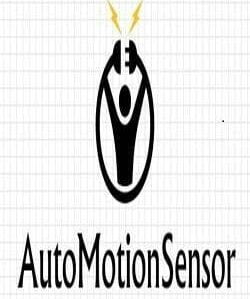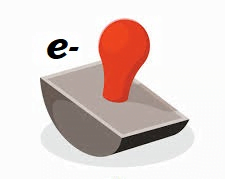Table of Contents
Introduction- Electronic stamping or E-stamp
In an era marked by rapid technological advancements and digitization, manual procedures and traditional paperwork are gradually disappearing. One such change that has altogether influenced lawful documentation and monetary exchanges is electronic stamping. Electronic stamping is a digital version of the old stamp paper system that makes legal and financial processes more efficient, transparent, and convenient. In this article, we will dig into the universe of electronics stamp, investigating its advantages, applications, and suggestions for the advanced age.
The Custom and Old Stamp Paper Framework
Before the coming of e-stamp, the customary stamp paper framework was the essential method for approving and executing different authoritative archives and monetary exchanges in numerous nations. It expected people and substances to buy actual stamp papers of foreordained categories from government-assigned sellers. These stamp papers were then joined to records like arrangements, agreements, deeds, and sworn statements, showing that the predetermined measure of stamp obligation had been paid to the public authority.
The customary stamp paper framework, albeit broadly utilized, was not without its difficulties. It frequently elaborates lumbering cycles, including actually visiting stamp merchants, conveying enormous amounts of cash for stamp obligation installments, and managing the gamble of fake stamps. In addition, the framework’s rigidity and paper-based nature dialed back exchange processes and thwarted straightforwardness.
The Development of Electronic Stamps
Perceiving the impediments of the conventional stamp paper framework, legislatures and administrative specialists overall began investigating ways of digitizing the stamping system. Electronics stamping, also referred to as e-stamping, arose as a result of this demand for efficiency and modernization.
It replaces actual stamp papers with advanced counterparts that are created and put away electronically. These advanced stamps are sealed, secure, and can be effectively confirmed. Governments frequently collaborate with authorized service providers or establish dedicated e-stamping portals to facilitate this transition.
It can be compared to digital currency or e-currency which is the coming future where the physical paper notes are not required. You must be aware of the fact that in the future, many countries re shifting towards digital currency instead of physical currency.
Advantages of E-Stamping
Proficiency and Accommodation: Electronic stamping takes out the requirement for actual stamp papers and in-person visits to stamp sellers. Parties engaged with an exchange can now finish the stamping system web based, saving time and exertion.
Transparency: Because all stamping activities are recorded digitally, e-stamping ensures transparency. This lessens the probability of stamp obligation avoidance and deceitful practices.
Security: Advanced e-stamps are exceptionally secure and carefully designed. They incorporate different security highlights, making it very hard for fake stamps to be made.
Cost Reserve funds: Wiping out the requirement for actual stamp paper creation, dispersion, and capacity can bring about cost reserve funds for states. Furthermore, people and organizations save money on transportation costs and the expenses charged by stamp sellers.
Ecological Effect: The shift towards electronic stamp decreases the utilization of paper, adding to natural preservation endeavors.
Utilization of Electronics Stamping
Property Exchanges: One of the most well-known uses of electronic stamp is in property exchanges. E-stamping of lease agreements, deeds, and property sale agreements simplifies the process for all parties involved—buyers, sellers, and government agencies.
Monetary Agreements: Monetary organizations frequently utilize e-stamps for arrangements, for example, credit reports, promissory notes, and home loans. This improves the productivity of the loaning system.
Authoritative Archives: Stamping is frequently required on legal documents like contracts and affidavits. E-stamping works on the approval cycle and guarantees the validness of these reports.
Insurance Contracts: Insurance agency utilize electronic stamps to approve arrangements, making it more straightforward for clients to buy and oversee protection items.
Business Arrangements: Organizations frequently go into different business arrangements that require stamping. E-stamp facilitates the execution of these arrangements, permitting organizations to zero in on their center exercises.
Difficulties and Contemplation
While electronic stamping offers various benefits, there are likewise difficulties and contemplation that should be tended to:
Digital Gap: The computerized partition, which alludes to differences in admittance to innovation and the web, can impede the far and wide reception of electronics stamping. States need to guarantee that the progress doesn’t reject people and networks with restricted advanced admittance.
Security Concerns: Even though electronic stamps are intended to be secure, cyberattacks can still occur. Legislatures and specialist co-ops should ceaselessly improve network safety measures to safeguard against unapproved access or control of advanced stamps.
Lawful Acknowledgment: The lawful acknowledgment of electronic stamps changes, starting with one ward, then onto the next. State run administrations should lay out clear lawful structures that approve electronic stamps to guarantee their far-reaching acknowledgment.
Education for Users: Clients, including people and organizations, may require schooling and preparing to adjust to electronics stamping processes. Legislatures can assume a part in giving direction and support to work with this change.
Information Security: Concerns regarding the security and privacy of digital stamping data arise from their collection and storage. State run administrations should execute strong information security strategies to defend delicate data.
The Eventual fate of E-Stamping
Electronic stamping is ready to assume a critical part in the continuous computerized change of legitimate and monetary cycles. As innovation keeps on propelling, we can hope to see further developments in e-stamping, including the joining of blockchain innovation for improved security and straightforwardness.
Besides, the Coronavirus pandemic has sped up the reception of computerized arrangements across different businesses, including lawful and monetary areas. The expanded dependence on remote work and online exchanges has highlighted the significance of productive and secure electronics stamping processes.
Final words
Electronics stamping addresses a huge jump forward in the realm of lawful documentation and monetary exchanges. It offers proficiency, straightforwardness, and security, it is approved to reform how arrangements and exchanges. While challenges remain, legislatures and administrative specialists overall are effectively attempting to conquer these deterrents and guarantee the consistent reception of electronic stamps. As innovation keeps on developing, electronics stamp will probably turn into a significantly more necessary piece of the advanced lawful and monetary scene, further streamlining and upgrading different cycles for people and organizations the same.

